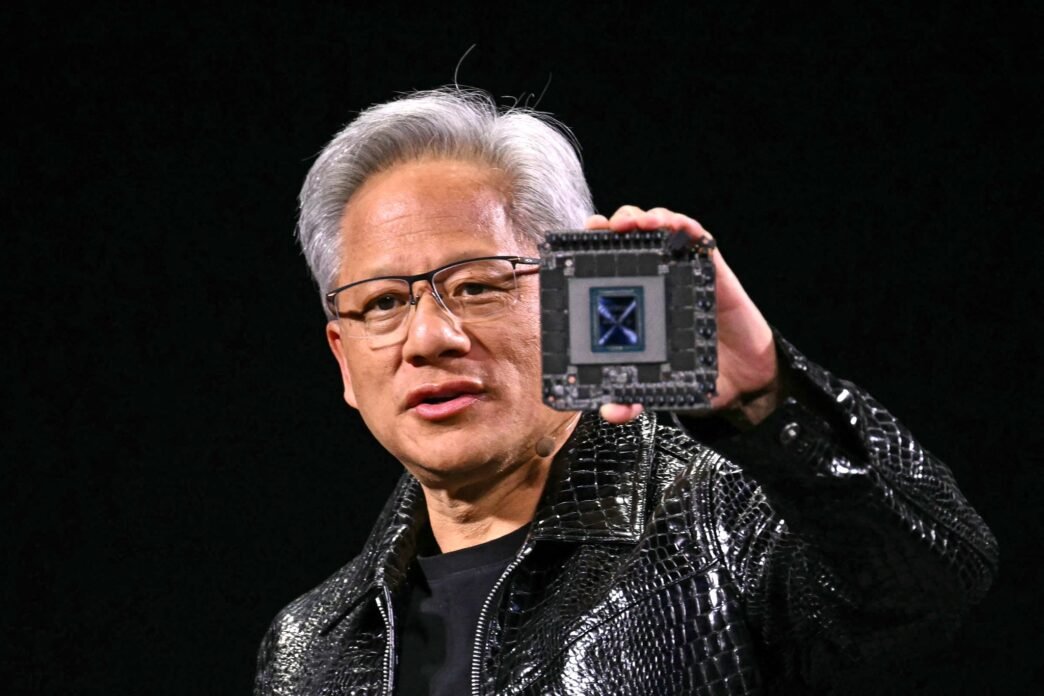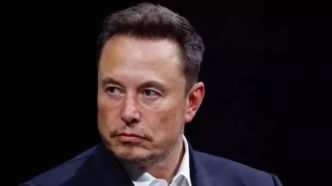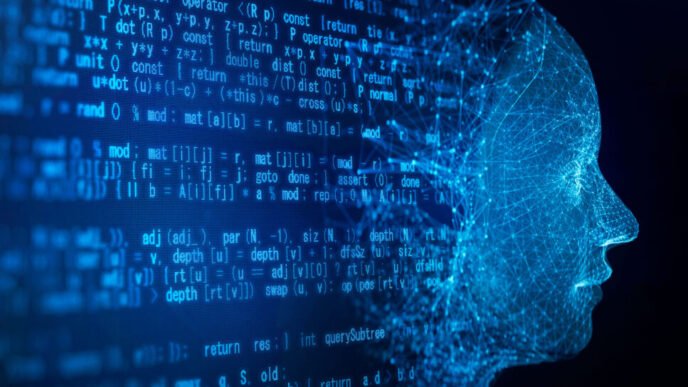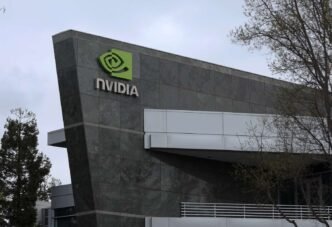The pace of technological innovation has long been dictated by Moore’s Law, a principle that predicted the doubling of transistors on computer chips approximately every two years. However, Nvidia CEO Jensen Huang believes his company’s AI chips are outpacing this historical benchmark, setting a new standard for computational progress. In a recent keynote at CES 2025 in Las Vegas, Huang captivated an audience of 10,000 with his bold claims, asserting that Nvidia’s advancements in AI chip performance are reshaping the future of artificial intelligence.
Moore’s Law: A Historical Overview
Coined by Intel co-founder Gordon Moore in 1965, Moore’s Law has been a reliable yardstick for the computing industry for decades. It predicted exponential growth in chip performance while reducing costs. For years, this principle held true, fueling innovation across industries.
However, as transistors approached physical limitations, the rate of improvement slowed. Many in the tech world questioned whether Moore’s Law could sustain its relevance. This is where Nvidia enters the picture, introducing chips that surpass traditional benchmarks.
Nvidia’s Accelerated Progress
Huang highlighted that Nvidia’s latest data center superchip delivers unprecedented performance. According to the company, this new chip is 30-40 times faster for AI inference workloads than its predecessor, the H100. This advancement represents a seismic shift in AI technology, enabling faster, more efficient, and cost-effective AI operations.
| Nvidia Chip Model | Performance Increase | Key Application |
|---|---|---|
| H100 | Baseline | Training AI Models |
| GB200 NVL72 | 30-40x Faster | Inference Workloads |
Huang attributes this acceleration to Nvidia’s ability to innovate across the entire stack—architecture, chips, systems, libraries, and algorithms—simultaneously. “If you do that,” Huang noted, “you can move faster than Moore’s Law.”
AI Scaling Laws: Redefining Progress
Huang also introduced the concept of three active AI scaling laws:
- Pre-training: The initial phase where AI models learn patterns from vast datasets.
- Post-training: Fine-tuning models using methods like human feedback to enhance their accuracy.
- Test-time Compute: The inference phase, where AI models use advanced computation to provide smarter, more thoughtful responses.
Nvidia’s advancements in test-time compute are particularly notable, as they directly address the high costs associated with running AI models like OpenAI’s o3. For instance, OpenAI reportedly spent $20 per task to achieve human-level performance using its o3 model, a price point too steep for mass adoption. Nvidia’s new chips aim to reduce these costs significantly, making sophisticated AI more accessible.
Nvidia’s Competitive Edge in AI Chips
As the AI boom continues, Nvidia remains at the forefront, providing the hardware that powers leading AI models from companies like OpenAI, Google, and Anthropic. However, some experts have questioned whether Nvidia’s dominance will persist, especially given the high cost of its chips.
Huang addressed these concerns by emphasizing Nvidia’s focus on creating more performant chips. He explained that as performance improves, costs eventually decrease. This trend aligns with recent observations: AI model costs have plummeted in the past year, thanks in part to breakthroughs from companies like Nvidia.
Statistical Insights: Nvidia’s Leap Over a Decade
Huang underscored the rapid evolution of Nvidia’s technology by sharing a staggering statistic: today’s Nvidia AI chips are 1,000 times more powerful than those produced a decade ago.
| Year | Relative Performance |
|---|---|
| 2015 | Baseline |
| 2025 | 1,000x Improvement |
This extraordinary leap underscores Nvidia’s ability to drive innovation at an unparalleled pace, challenging traditional notions of technological progress.
Implications for AI and Beyond
Nvidia’s advancements have far-reaching implications for various industries. The improved performance of AI chips could:
- Lower Costs: As chip efficiency improves, the cost of running AI models will decrease, making advanced AI accessible to more businesses and individuals.
- Accelerate Innovation: Faster and more capable chips will enable researchers and developers to explore new frontiers in AI.
- Democratize AI: By reducing barriers to entry, Nvidia’s technology could empower startups and smaller organizations to leverage AI tools.
Additionally, these advancements may pave the way for AI reasoning models to contribute to better data generation for training and post-training, creating a virtuous cycle of improvement.
Challenges and Future Outlook
Despite Nvidia’s impressive achievements, challenges remain. For instance, the cost of implementing test-time compute at scale is still a concern. OpenAI’s experience with the o3 model highlights the financial hurdles associated with cutting-edge AI technology.
However, Huang remains optimistic. “The direct and immediate solution for test-time compute, both in performance and cost affordability, is to increase our computing capability,” he said. This vision reflects Nvidia’s commitment to pushing the boundaries of what’s possible in AI.
Nvidia’s Vision for the Future
Jensen Huang’s claims about Nvidia surpassing Moore’s Law signal a transformative era in computing. By innovating across the entire stack and focusing on test-time compute, Nvidia is addressing some of AI’s most pressing challenges. While skeptics may question the feasibility of sustained progress, the evidence suggests that Nvidia is well-equipped to lead the charge.
As AI continues to reshape industries, Nvidia’s groundbreaking technology serves as a testament to the power of relentless innovation. Whether you’re an AI enthusiast or a casual observer, one thing is clear: the future of computing is being written by companies like Nvidia, where the sky is no longer the limit.
Also read:
Nvidia Surpasses Apple: Becomes World’s Largest Company Amid AI Surge













